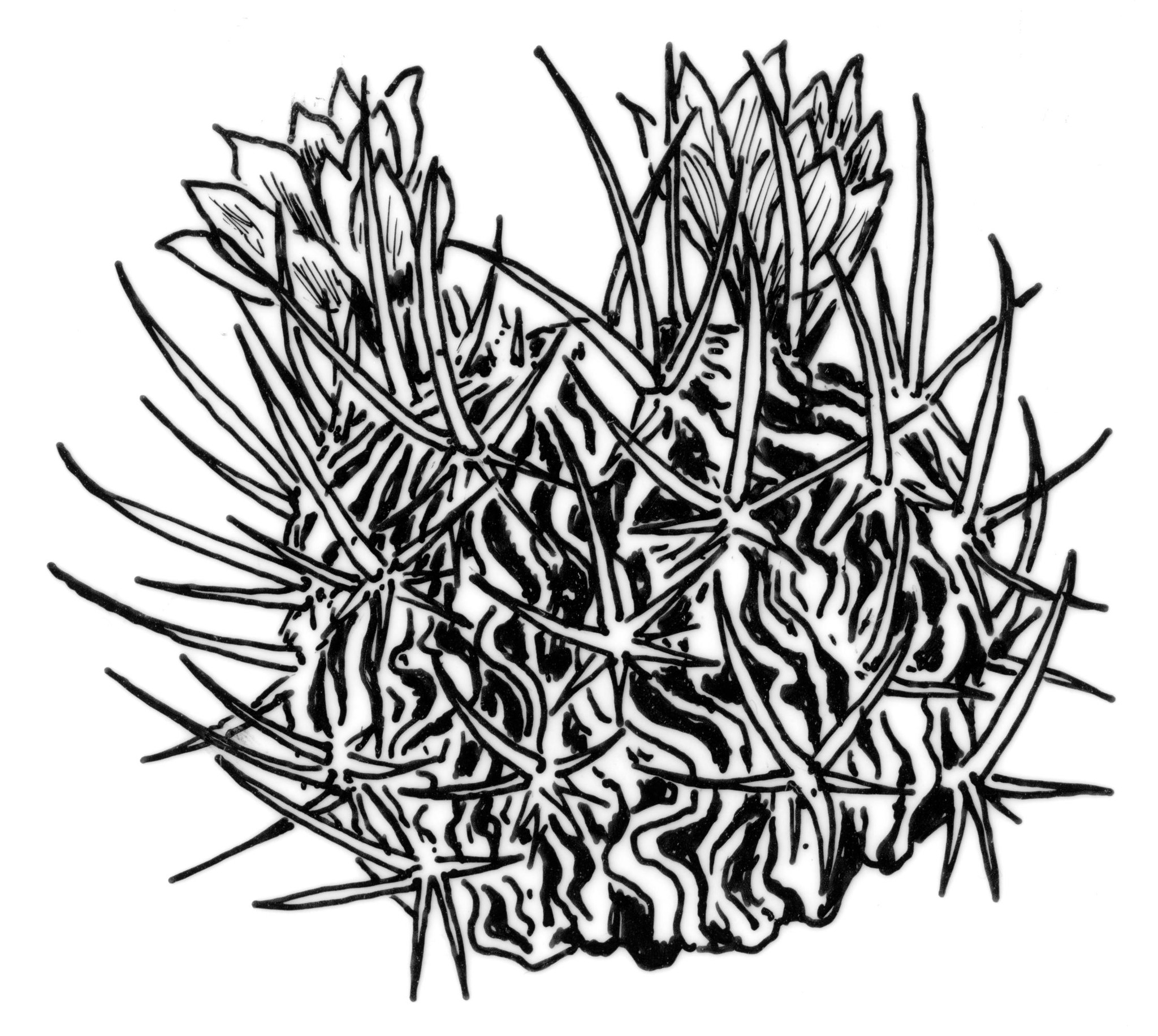
Commemorating P. Rebut, vintner and cactus merchant of Chazay d’Azergues.
Body low-growing, solitary or in clusters, rounded to shortly cylindrical, the surface ridged or with tubercles. Areoles round to to oval, elliptic or linear. Spines often bristly, sometimes not differentiated into radial and central kinds, of variable colour from white to yellow or brown. Flowers diurnal, mostly originating at the stem base, funnel-like, brightly coloured oranges, reds, yellow, purple, white or bicoloured; stamens fused to the perianth tube and sometimes the style as well. Pericarpel scales sometimes with hairs or bristles or both in their axils. Fruit mostly more or less spherical, drying papery and with persistent perianth. [Aylostera Speg., Mediolobivia Backeb., Weingartia Werder]
Many species were formerly listed under Sulcorebutia and Lobivia. R. neocumingii (Backeb.) D.R. Hunt from Bolivia has orange or yellow flowers on the upper areoles. [Weingartia neocumingii Backeb.] R. neumanniana (Backeb.) D.R. Hunt from NW Argentina has yellow to reddish orange flowers with a distinct throat ring. [Weingartia neumanniana (Backeb.) Werderm.]
Flowers arising at the shoulder of the body or lower.
About 30-40 South American species from the Andes in Bolivia to NW Argentina.
Donald (1979), Fearn & Pearcy (1981), Pilbeam (1985).
Source: (1997). Cactaceae. In: . Horticultural Flora of South-eastern Australia. Volume 2. Flowering plants. Dicotyledons. Part 1. The identification of garden and cultivated plants. University of New South Wales Press.
